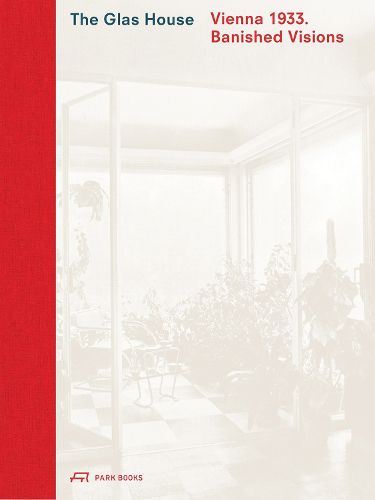Readings Newsletter
Become a Readings Member to make your shopping experience even easier.
Sign in or sign up for free!
You’re not far away from qualifying for FREE standard shipping within Australia
You’ve qualified for FREE standard shipping within Australia
The cart is loading…






Uncovers the forgotten achievements of Viennese architect Hans Glas. When in 1933 Hans Glas designed the villa for physicians Annie and Philipp Rezek on Wilbrandtgasse in Vienna, in the Austrian capital's eighteenth district, it was one of the city's most visionary buildings of its kind. The ?Glas House,? as the Rezek family called their home, is a quintessential example of modern architecture and the associated philosophy of living in 1930s Vienna. Viennese architect Hans Glas (1892?1969), a student of Adolf Loos, has today largely fallen into oblivion in Austria. The Glas House describes the Villa Rezek in detail, illustrated with numerous historical and new photographs by Stefan Olah, plans, and historic documents. It also sheds light on entirely novel aspects of Vienna's architectural history of the 1930s and tells the stories of both the architect and his clients, all of whom were forced to emigrate due to their Jewish heritage following the annexation of Austria by Nazi Germany in 1938. The Rezek family fled to the US. Hans Glas went to Calcutta, where he was able to successfully continue his career as an architect. Forced emigrations like these not only implied human tragedies; 1938 also brought an abrupt end of the flourishing of Vienna's modern architecture and living culture. Yet Glas's ideas and design principles are more relevant today than ever. AUTHORS: Caroline Wohlgemuth is an architecture and design historian based in Vienna. She works as an author with a focus on the biographies of displaced and forgotten artists, architects and designers, as well as on escape, expulsion, and exile in art, architecture and design. Maximilian Eisenkoeck is a Vienna-based architect. In addition to designing extraordinary new buildings, he focuses on the preservation and restoration of 20th-century buildings, such as the Villa Rezek of 1932/33 in Vienna. SELLING POINTS: . Villa Rezek, designed by architect Hans Glas in 1932/33, is an outstanding monument of Viennese modernism of the interwar period . This book is the first comprehensive account of the architecture, history and significance of the building that is also known as the ?Glas House? . Richly illustrated with historical photographs, plans and documents . With a newly produced photo essay documenting the recently restored Villa Rezek 80 colour illustrations
$9.00 standard shipping within Australia
FREE standard shipping within Australia for orders over $100.00
Express & International shipping calculated at checkout
Uncovers the forgotten achievements of Viennese architect Hans Glas. When in 1933 Hans Glas designed the villa for physicians Annie and Philipp Rezek on Wilbrandtgasse in Vienna, in the Austrian capital's eighteenth district, it was one of the city's most visionary buildings of its kind. The ?Glas House,? as the Rezek family called their home, is a quintessential example of modern architecture and the associated philosophy of living in 1930s Vienna. Viennese architect Hans Glas (1892?1969), a student of Adolf Loos, has today largely fallen into oblivion in Austria. The Glas House describes the Villa Rezek in detail, illustrated with numerous historical and new photographs by Stefan Olah, plans, and historic documents. It also sheds light on entirely novel aspects of Vienna's architectural history of the 1930s and tells the stories of both the architect and his clients, all of whom were forced to emigrate due to their Jewish heritage following the annexation of Austria by Nazi Germany in 1938. The Rezek family fled to the US. Hans Glas went to Calcutta, where he was able to successfully continue his career as an architect. Forced emigrations like these not only implied human tragedies; 1938 also brought an abrupt end of the flourishing of Vienna's modern architecture and living culture. Yet Glas's ideas and design principles are more relevant today than ever. AUTHORS: Caroline Wohlgemuth is an architecture and design historian based in Vienna. She works as an author with a focus on the biographies of displaced and forgotten artists, architects and designers, as well as on escape, expulsion, and exile in art, architecture and design. Maximilian Eisenkoeck is a Vienna-based architect. In addition to designing extraordinary new buildings, he focuses on the preservation and restoration of 20th-century buildings, such as the Villa Rezek of 1932/33 in Vienna. SELLING POINTS: . Villa Rezek, designed by architect Hans Glas in 1932/33, is an outstanding monument of Viennese modernism of the interwar period . This book is the first comprehensive account of the architecture, history and significance of the building that is also known as the ?Glas House? . Richly illustrated with historical photographs, plans and documents . With a newly produced photo essay documenting the recently restored Villa Rezek 80 colour illustrations